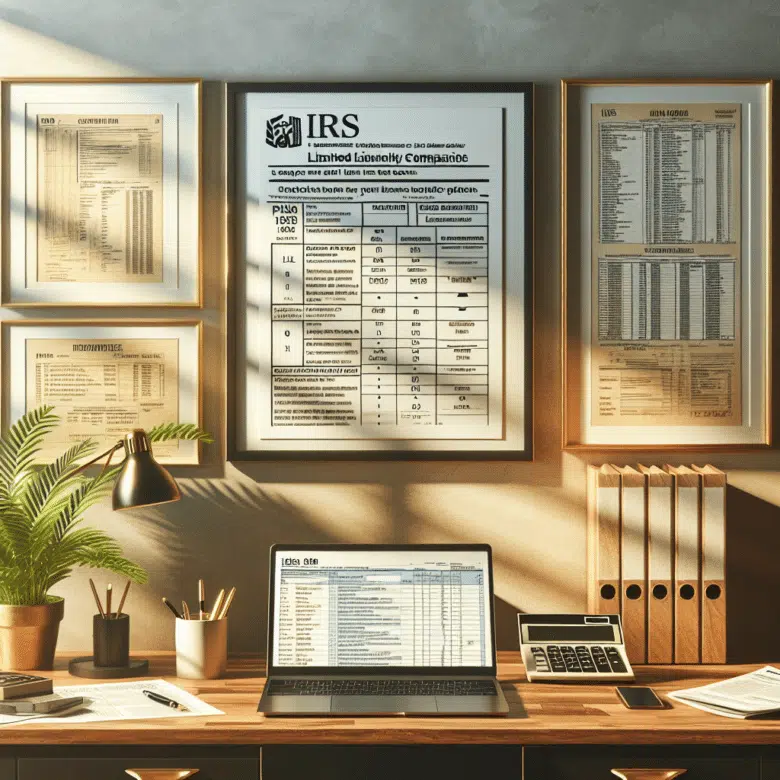When it comes to managing your taxes, keeping original receipts is not just a recommendation for business owners, it’s a vital practice. By maintaining a thorough record of your financial transactions, you ensure that you have the necessary documentation to substantiate any deductions you claim. This is particularly important as deductions can significantly reduce your taxable income, potentially saving you a substantial amount of money.
Original receipts serve as tangible proof of your deductions, whether they are for business, medical, charitable contributions, or other deductible categories. Without these, you may find it challenging to defend your claims in the event of an audit by the IRS. It’s not just about having a receipt; it’s about having the original document, as it carries more weight with the IRS than photocopies or electronic versions.
Furthermore, organizing these receipts in a systematic manner can streamline the tax filing process, making it less stressful and time-consuming. Consider categorizing them by type, date, and amount to have a clear overview of your expenditures.
At Akron Income Tax Co, we understand the importance of keeping original receipts for your deductions. Our team is here to help you navigate the complexities of tax preparation. Akron Income Tax Co is committed to providing income tax preparation services at reasonable fees. Visit apc1040.com to learn more about how we can assist you during tax season.
Importance of Original Receipts for Proof of Tax Deductions
The significance of keeping original receipts cannot be overstated, especially when it comes to tax deductions. These receipts are crucial as they serve as solid evidence of your claimed expenses, directly impacting the deductions you can legally take. In the eyes of the IRS, original receipts are the most credible form of proof, as they validate the legitimacy of the transaction and ensure compliance with tax laws.
Without original receipts, taxpayers run the risk of having their deductions disallowed during an IRS audit. This not only leads to potential penalties and interest but can also increase your taxable income significantly. The IRS requires that all deductions be substantiated with proper documentation, and original receipts are the gold standard for this purpose.
Moreover, keeping these receipts helps you maintain an accurate financial record, including credit card statements, aiding in the preparation of your tax return. When you’re able to provide original documentation, it facilitates a smoother verification process, should the IRS question your claims. This can save you both time and stress, as it prevents the need for additional explanations or justifications. Learn about creating a petty cash routine for small expenses.
In essence, original receipts are your first line of defense against potential disputes with the IRS. They not only validate your deductions but also reflect your diligence and responsibility in managing your financial affairs. By ensuring that you keep these documents safe and organized, you are safeguarding your finances and ensuring peace of mind during tax season.
Consequences of Not Keeping Receipts
Failing to keep original receipts for your tax deductions can lead to a cascade of adverse consequences. The IRS mandates that taxpayers substantiate their claims with adequate documentation, and without receipts, your deductions may be questioned or outright denied. This is where the Cohan rule comes into play, allowing deductions based on reasonable estimates even without original documentation. This can result in an increased tax liability, which means you could end up owing more money to the government than anticipated.
One of the most immediate consequences is the potential for audits. The absence of original receipts can trigger red flags during IRS reviews, prompting a more thorough examination of your financial records. An audit can be time-consuming and stressful, often requiring you to provide additional documentation to justify your claims. The lack of receipts can make this process more difficult, as you may have to rely on less credible forms of proof, such as bank statements or credit card records, which may not always satisfy IRS requirements.
Losing your Deductions, will cost you big time!
Moreover, if deductions are disallowed due to insufficient documentation, penalties and interests may be imposed. The IRS can charge penalties for underpayment of taxes, which occur when deductions are removed. Interest on unpaid tax can also accrue, adding to your financial burden.
Not keeping receipts can also have a broader impact on your financial planning and record-keeping. It can lead to inaccuracies in your tax filings and financial statements, affecting your ability to make informed financial decisions. In the long run, this oversight can influence your credit rating and financial standing, as discrepancies in tax filings can reflect poorly on financial assessments.
In summary, the consequences of not keeping receipts can extend beyond immediate financial penalties, affecting your overall financial health and peace of mind. Ensuring that you maintain a thorough record-keeping system for your receipts is a prudent step in preventing these issues.
Best Practices for Organizing Receipts
Organizing your receipts efficiently can make a significant difference when it comes to *proving your deductions* during tax season. Implementing best practices not only simplifies the tax filing process but also ensures that you are prepared in case of an auPetty Cashdit.
**1. Categorize Receipts:** Start by categorizing your receipts based on the nature of the expense. Common categories include business expenses, medical expenses, educational costs, and charitable contributions. This categorization helps in quickly identifying the purpose of each receipt.
**2. Use Digital Tools:** Consider using digital applications and tools to streamline your receipt management. Scanning and storing receipts electronically can reduce clutter and minimize the risk of losing important documents. Many apps offer features like categorization and keyword search, allowing for easy retrieval.
**3. Maintain a Filing System:** Whether you choose a digital method or a traditional paper system, maintaining a consistent filing system is crucial, especially as tax time approaches. For paper receipts, consider using folders or envelopes labeled by category and date. Ensure that your digital files are named systematically, possibly including the date and category, to make them easily searchable.
Backup and Save!!!
**4. Regular Review and Backup:** Set aside time periodically to review and organize your receipts. This practice not only ensures that your record-keeping is up-to-date but also helps identify any gaps or missing receipts. Additionally, regularly back up your digital files to a secure cloud storage to prevent data loss.
**5. Retain Receipts for a Sufficient Period:** The IRS typically recommends keeping receipts for at least three years from the date you filed your original return. However, if you claim a loss from worthless securities or bad debt deduction, it’s always a good idea to keep records for seven years. Adhering to these timelines can prevent any issues if older tax returns are questioned.
By adopting these best practices, you can efficiently manage your receipts, ensuring that you have the necessary documentation to support your tax deductions. A well-organized receipt system not only aids compliance but also provides peace of mind, knowing that you are well-prepared for any inquiries that may arise.
Digital vs Physical Receipts for Tax Purposes
When it comes to **keeping original receipts to prove your deductions**, taxpayers often face the dilemma of choosing between digital and physical formats. Each option has its own set of advantages and potential drawbacks, impacting how effectively you manage your documentation for tax purposes.
**Digital Receipts:** With the advancement of technology, digital receipts have become increasingly popular. They offer several benefits, such as easy storage and access. By using apps and cloud services, you can store thousands of receipts without worrying about physical space. Digital receipts are less likely to fade over time and can be easily categorized and retrieved through simple searches. Moreover, digital storage solutions often come with backup options, ensuring that your documents are secure against physical damage such as fire or water.
Digital Receipts
However, digital receipts require a level of tech-savviness and access to digital tools. There’s also the risk of data breaches, which may compromise sensitive information. It’s crucial to use secure platforms and regularly back up your digital files to mitigate these risks.
**Physical Receipts:** On the other hand, physical receipts are the traditional choice and are often seen as more tangible proof of transactions. They are straightforward to manage and do not require any digital tools to access. Physical copies also eliminate the risk of digital fraud and hacking.
Nevertheless, physical receipts can be prone to damage, loss, and fading over time. Storing them efficiently requires dedicated space and good organization to ensure they are readily available when needed. Additionally, paper receipts can contribute to clutter, making it challenging to maintain an orderly system.
Ultimately, the decision between digital and physical receipts depends on personal preference and circumstances. Many taxpayers find a hybrid approach beneficial, where they retain physical receipts but also scan and store them digitally for added security and convenience. This dual strategy can provide the best of both worlds, ensuring that you are well-prepared for any tax-related inquiries.
Final Thoughts on Proving Proof of Deductions
In conclusion, maintaining a thorough record-keeping system is crucial for proving your deductions during tax season, especially with your documentary evidence readily at hand. Whether you opt for digital, physical, or a combination of both receipt types, the key is to ensure that your documentation is complete, well-organized, and readily accessible. This not only enhances your ability to substantiate claims but also gives you peace of mind knowing that you are prepared for any potential audits or inquiries.
Remember that the IRS requires clear evidence of all deductible expenses, and failure to provide such documentation could result in disallowed deductions and possible penalties. By diligently keeping your receipts, you stand a better chance of maximizing your eligible deductions and minimizing your tax liability.
At Akron Income Tax Co, we understand the complexities of tax preparation and the importance of accurate record-keeping. Our dedicated team is here to provide you with professional income tax services at reasonable fees, ensuring that your tax season is as stress-free as possible. For more information on how we can assist you, please visit our website.
With the right approach to record-keeping and expert guidance, you’ll be well-equipped to navigate the intricacies of the tax system and secure the deductions you rightfully deserve.
FAQs
What documents are required as proof of tax deductions?
To prove tax deductions, keep original receipts, invoices, bank statements, mileage logs, canceled checks, and any other relevant documents. These should clearly show the expense details, payment method, date of transaction, and the business purpose to substantiate your deductions during tax audits.
How can one ensure the legitimacy of tax deduction proofs?
To ensure tax deduction proof legitimacy, keep original receipts, categorize expenses clearly, and maintain a detailed record of each transaction. Additionally, use digital tools for safekeeping and backup to prevent loss of essential documents in case of audits or inquiries.
What are some common mistakes to avoid when submitting proof of tax deductions?
Common mistakes to avoid when submitting proof of tax deductions include failing to keep original receipts, mixing personal and business expenses, not documenting deductions properly, and overlooking tax deductions that could save you money. Be meticulous and organized to ensure smooth tax filing.
What steps can be taken if the IRS questions the proof provided for tax deductions?
If the IRS questions proof of tax deductions, ensure receipts are legible and match deductions claimed. Provide additional documentation like bank statements or invoices if needed. Communicate promptly, clarify any discrepancies, and seek professional tax advice if required to resolve the issue efficiently.








